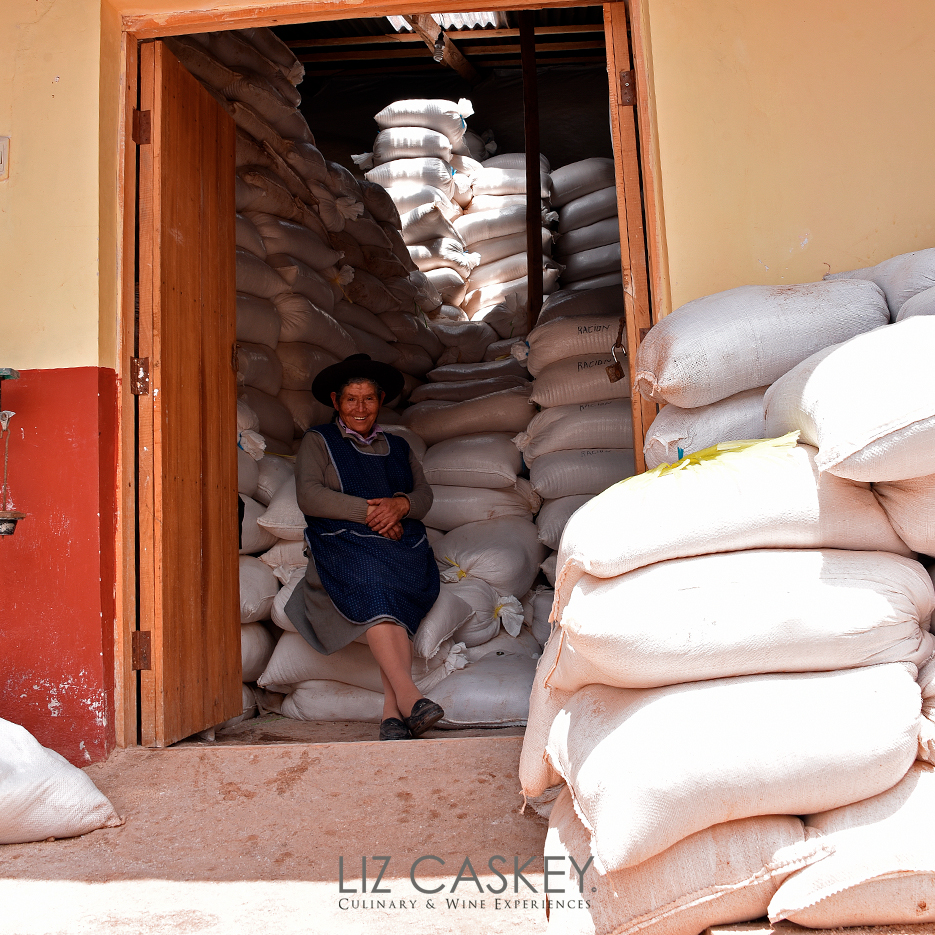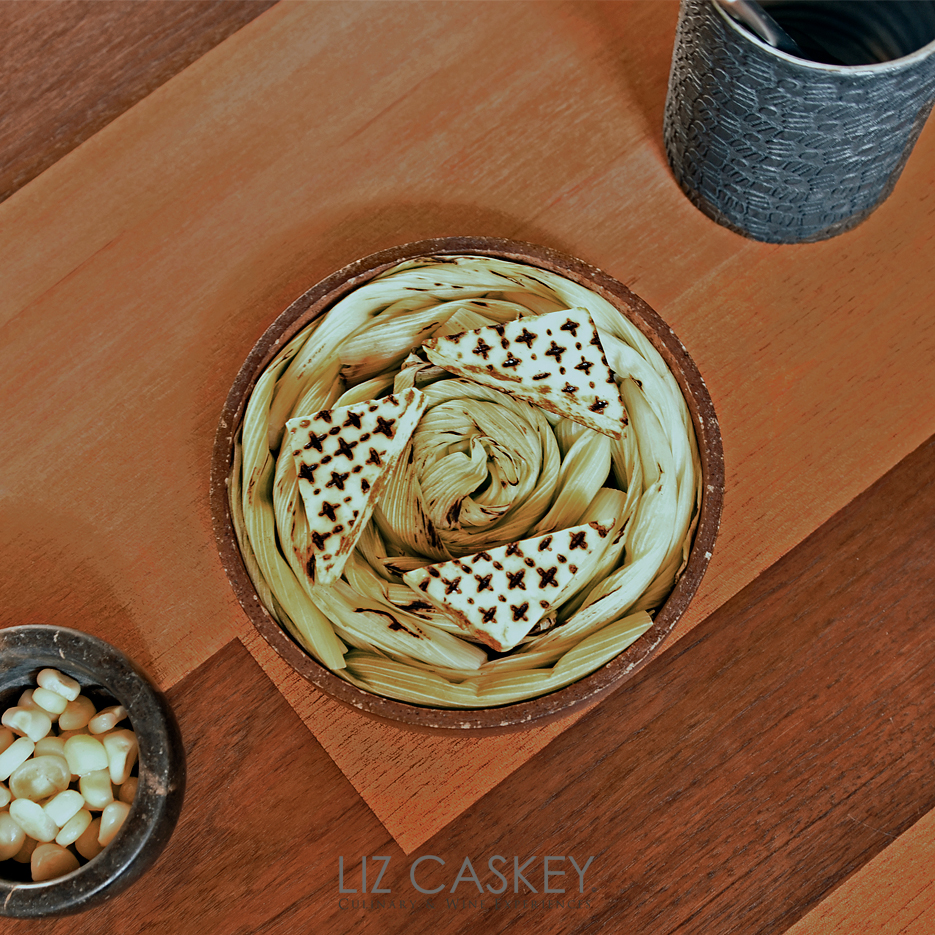
I am on a twisting country road high on an Andean plateau. We appear to be on a road to nowhere as we careen towards the jagged outline of the Andes. We zip through patchwork fields where only an occasional shepherd herds a flock of sheep or alpacas.
We pass through the colonial village of Maras, a place untouched by the passage of time and centuries of development. Its crumbling 16th-century facades still bare the original coats of arms erected by the Spanish when Maras was a key stop on a major trading route between the Andes and the jungle.
Our destination? MIL. Opened in mid-2018, this is the latest restaurant of Peru’s game-changing, envelope-pushing, futuristic-thinking chef, Virgilio Martinez. He rose to culinary heights with Central Restaurante in Lima (ranked among the best in the world) and debut on Netflix’s “The Chef’s Table”. However, it is MIL, which is quickly becoming a bucket list restaurant for food-loving travelers journeying to Peru. In fact, lunch at MIL is not only what you could call “destination dining”, but it’s also as necessary as a trip to Machu Picchu. Simply put, MIL will blow open your understanding of Sacred Valley culture, food, traditions, and history via the plate (and palate).
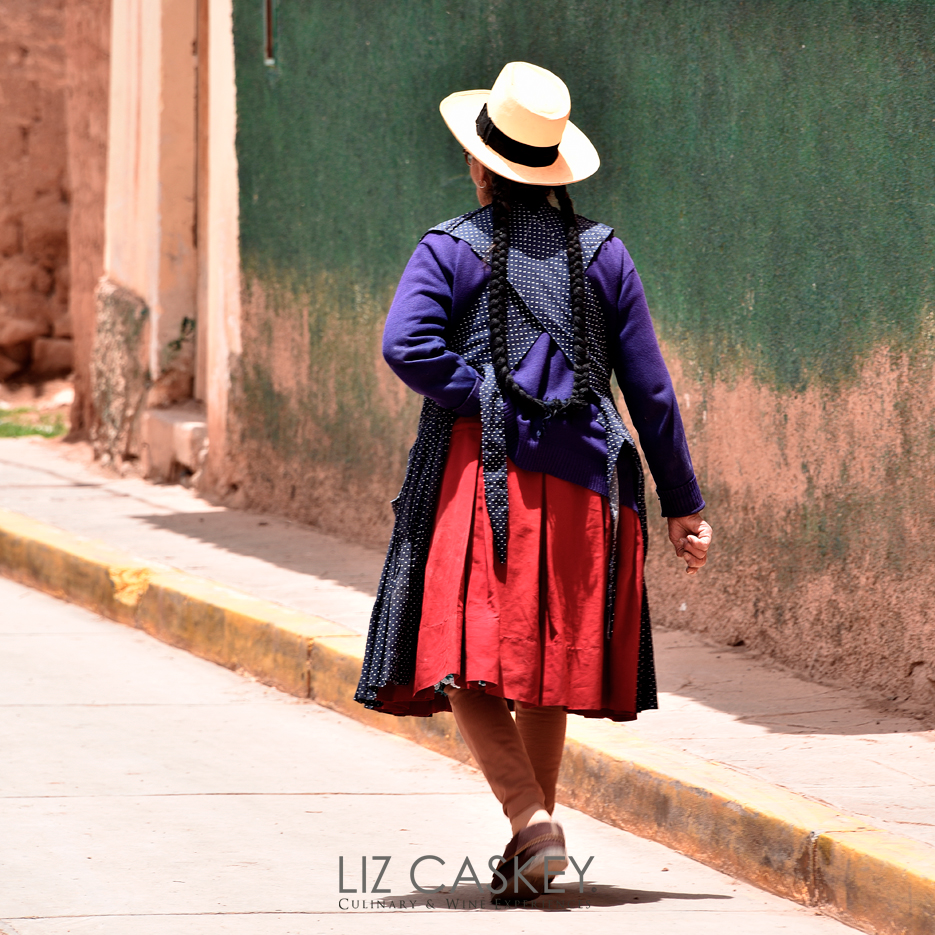
The restaurant is perched above the breathtaking ruins of Moray, a wide-open amphitheater of stacked concentric circles with the backdrop of the chiseled mountains. These terraces were built into the mountainside as a sort of ancient Andean laboratory by the Incas at 11,500 feet above sea level. Here, they likely studied crops at different altitudes and conditions growing everything from fava beans to corn and tubers.
Chef Virgilio has always found inspiration for his menus in Peru’s mix of altitudes and their different ecosystems. The team at MIL has formed a few co-ops, of sorts, to work with nearby indigenous communities to source local foodstuffs, meats, vegetables, herbs, pink salt, and perhaps most important, leverage their knowledge. It’s these local communities that have taught them about the plants, their cultivation, the traditions, the ancestral dishes, and food preparations. Together, MIL (and the accompanying research lab, Mater Iniciativa) is working to honor Sacred Valley’s regionality, diversity, and ultimately the identity of its unique cuisine within Peru. They are the “culinary conservationists”.
There is no dinner served at MIL, only lunch. Much of it has to do with the restaurant’s distance from Cusco and relative isolation. It’s also a nod to the longstanding tradition of the farmworkers partaking in a large midday meal. And let’s also recognize that at this altitude, 11,700 feet above sea level to be exact, digestion is considerably slower. Thus, lighter fare and eating slowly, along with skipping the booze, is usually recommended. I would also throw in, as a pro tip, to only dine at MIL once you are fully acclimated to the high altitude (i.e. do not make a beeline from the Cusco airport to lunch; give your body a day or two to adjust).
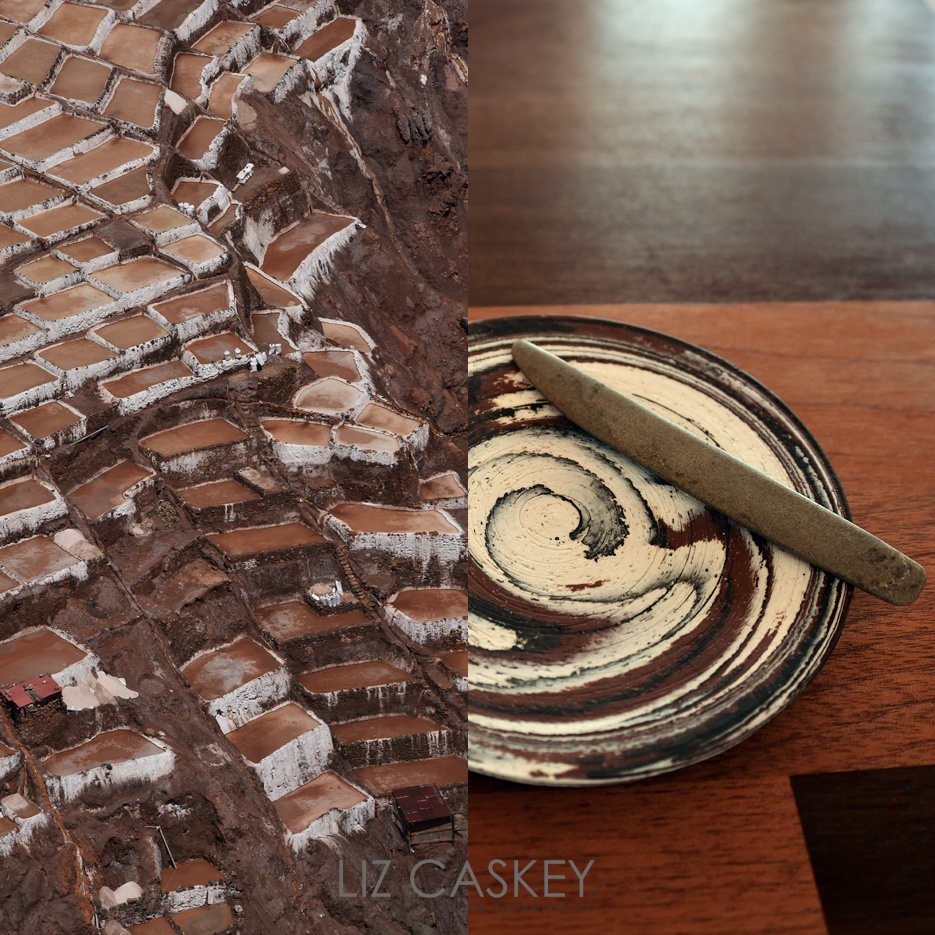
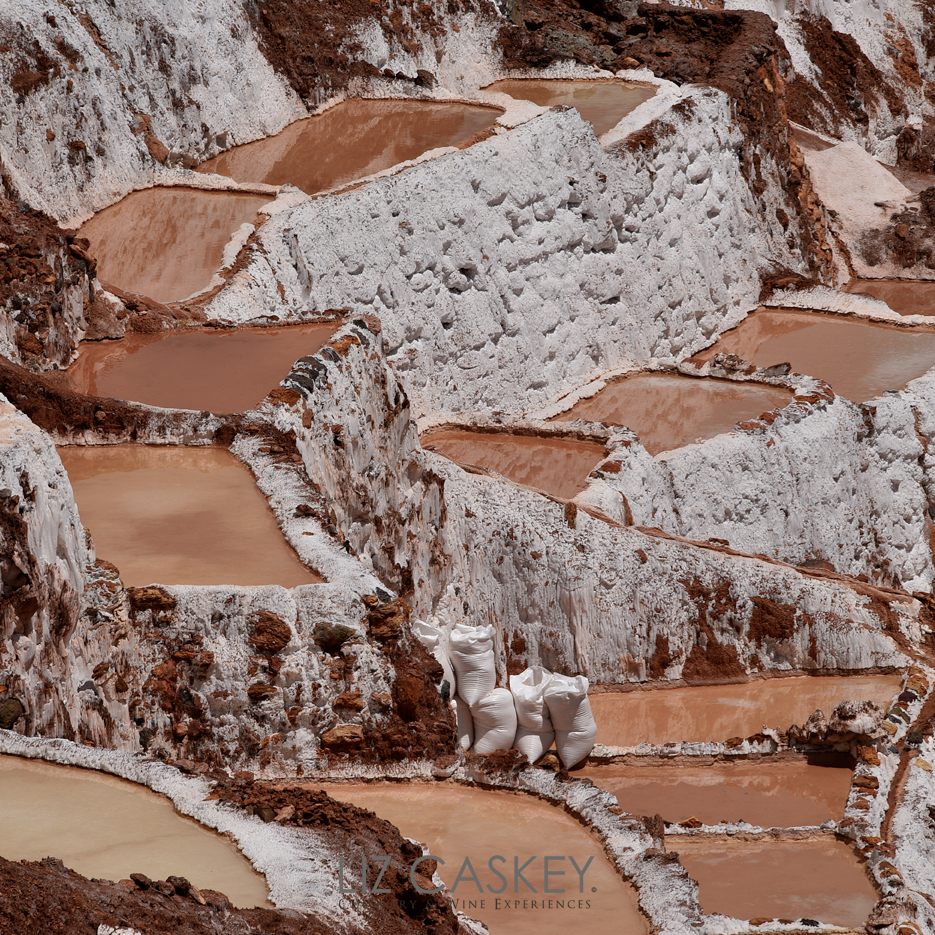
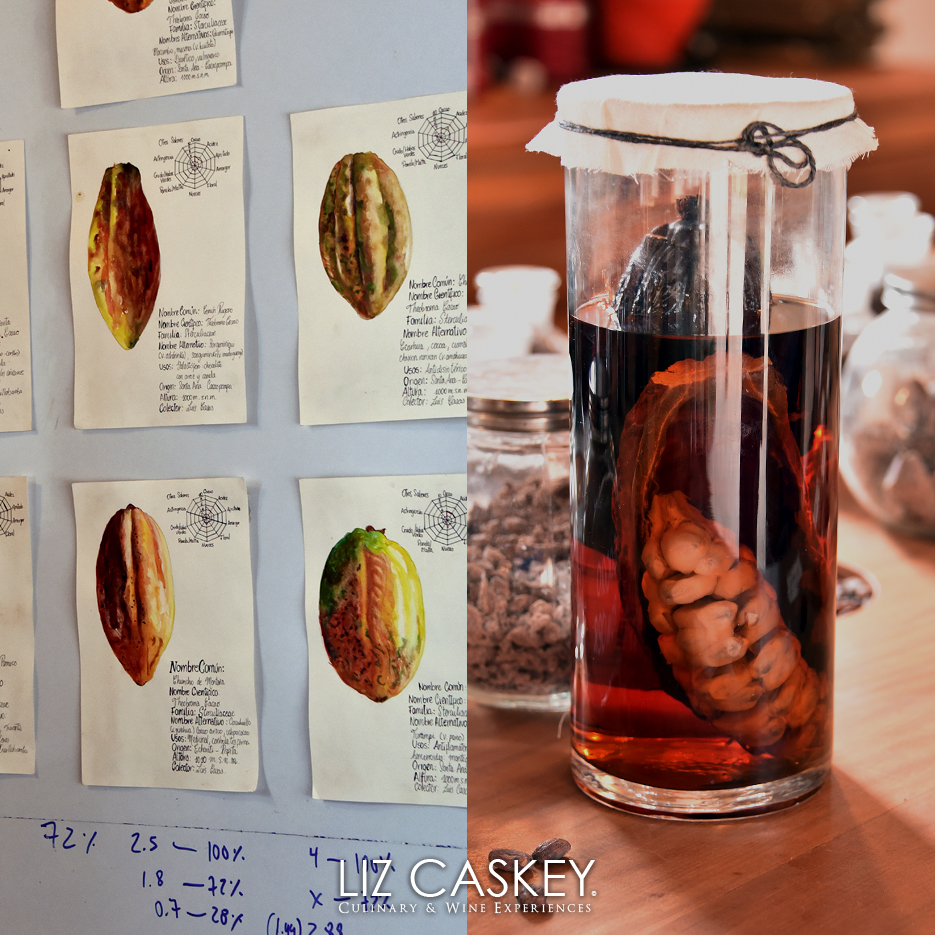

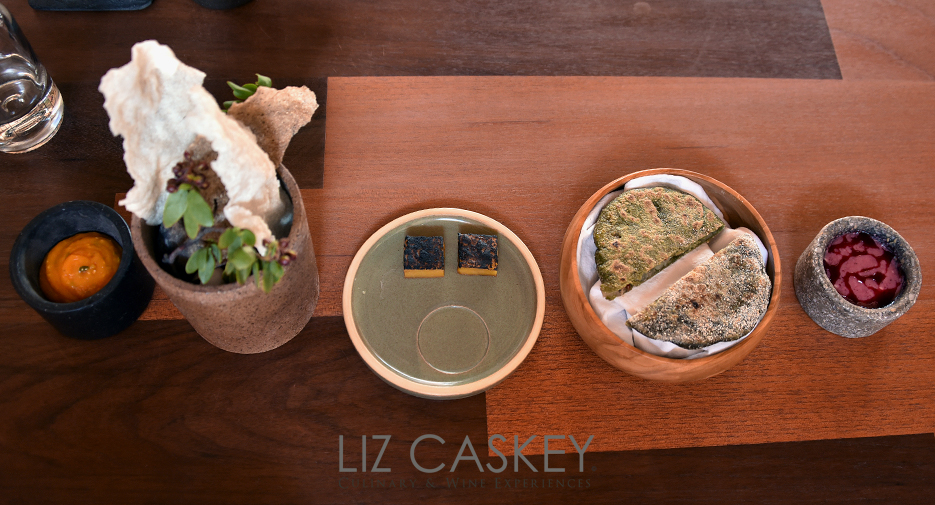
MIL is housed within a former vicuña breeding center and previously was a parador used for private events. When Martinez acquired the property, it was completely transformed into a minimalist culinary temple dedicated to research, the preservation of Andean culinary culture, and the finest restaurant in Peru outside Lima.
Built around a central courtyard encased by glass, we first pass through the dried herb corridor where native plants and herbs are hung to be air-dried. Around the corner, we wander past shelves of damajuanas, jugs, filled with pisco and agua ardiente where the herbs are infusing the spirits to make drinkable “potions”.
Inside the restaurant, there’s a hushed monastic vibe. The interiors of the dining rooms are minimalist with sleek, long wooden tables that make you feel as if you are sitting down to a great feast (you are). On the wall, hangings of colorful spun alpaca yarn in earthy hues give texture and warmth to the adobe walls. This all sets a clean stage for the show-stopping dishes about to grace our table.
Our host, with a sweet southern drawl, welcomes us. We embark on our voyage. At MIL, there are no courses, only “moments” (eight of them). They have clever names like “Andean Forest”, “Extreme Altitude,” “Frozen Cordillera”, and “Huatia de Cacao”. Each moment thoughtfully explores the flavors of different altitudes and the corresponding agricultural and cultural ecosystems found there.
Our first moment is Preservation where chuño, a common foodstuff in the Andes, is the star. Chuño is made from potatoes that have been freeze-dried at high altitudes until they turn into white little rocks. They can be stored for long periods without spoilage and are normally rehydrated into soups, or milled into a starchy flour to be used in bread. In this case, it was made into delectably crunchy, airy chuño chips served alongside a spongy green coca leaf bread filled with pureed fava beans. Fava beans are a staple food of the Andean communities since they grow well at high altitudes. A sauce (elderberry) butter and a tree tomato uchuta (chile sauce) were accompaniments. It was a mesmerizing contrast of textures and unusual flavors happening in my mouth at once.
I suddenly wished I had a wine to accompany it, but I knew the altitude would make my head pound later. I sipped my muña tea, an Andean wild mint growing on the mountainsides (magic for both digestion and altitude). MIL does have high-concept, non-alcoholic drink pairings that range from tealike concoctions to juices and the citrusy kiwicha (amaranth) milk though, too.
The next course served is called “Plateau”. It’s (raw) lamb tartare. Everyone glances quietly at each other, saying nothing. But I know what everyone’s thinking… “Raw lamb?!?!” Our host senses our trepidation and assures us it’s fine. I spoon a little of the pink meat and delicate flower petals onto a crunchy quinoa cracker. It is succulent yet light, and far from gamey. I take another bite and fight my desire to immediately hoard the entire dish for myself (MIL serves everything family-style).
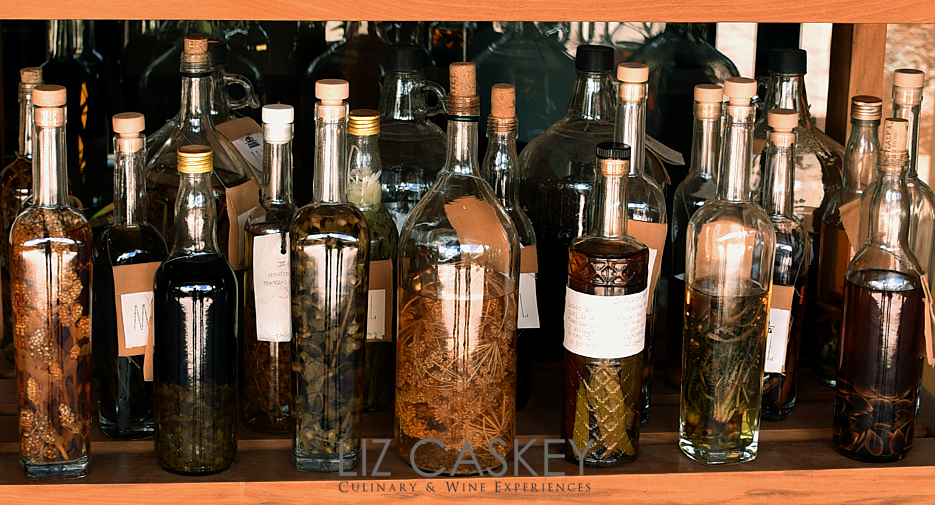
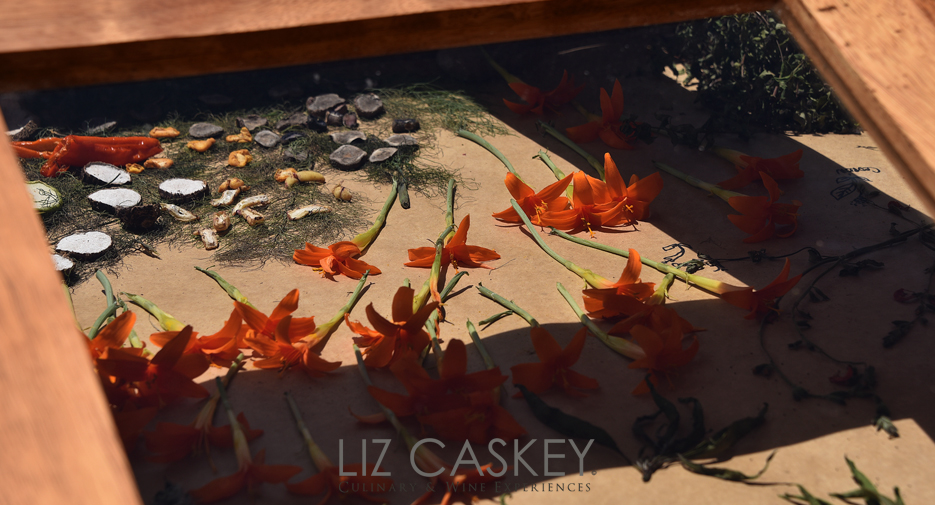
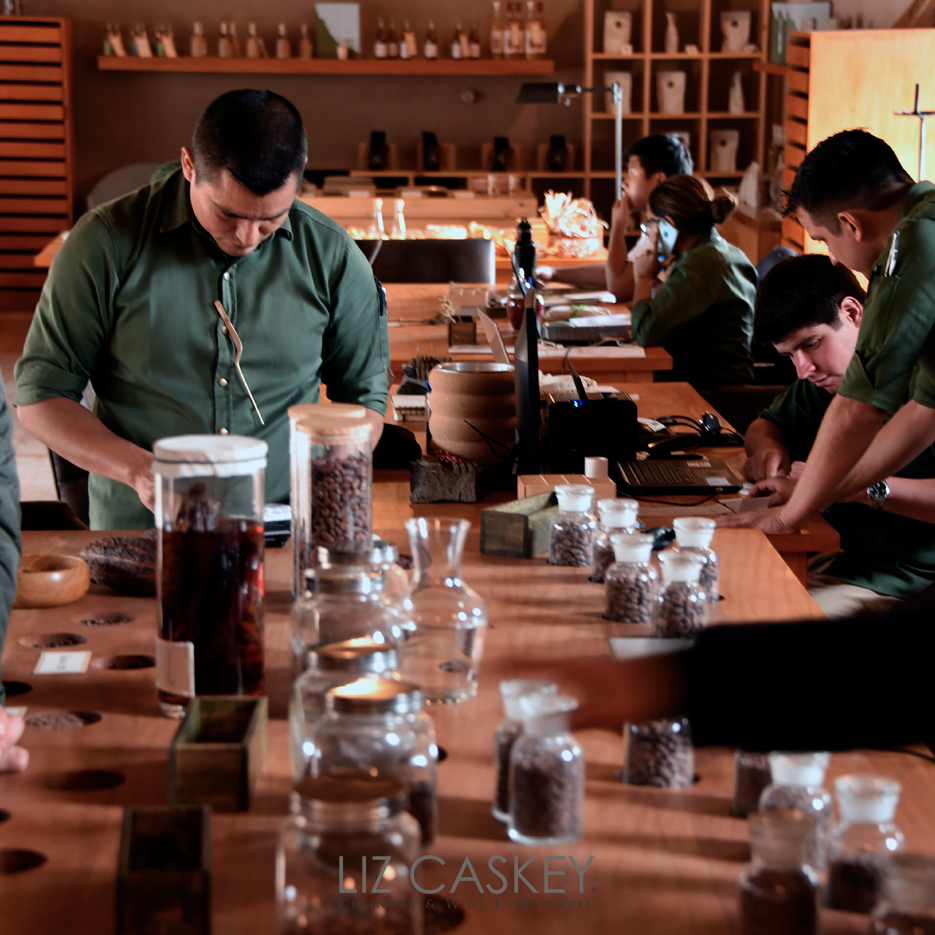
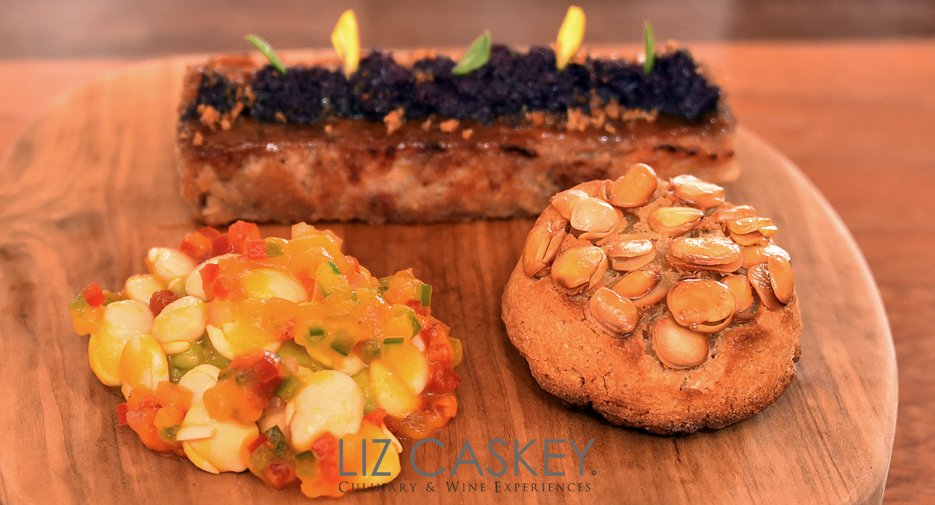
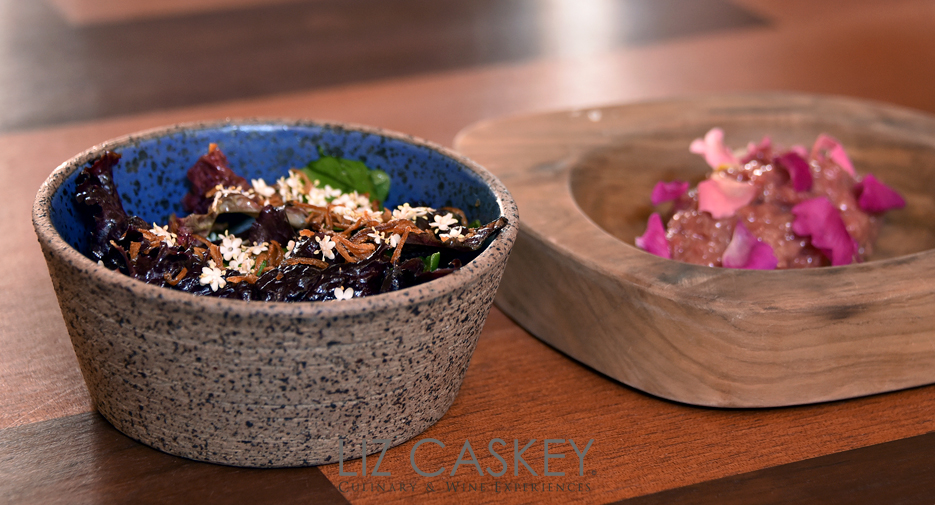

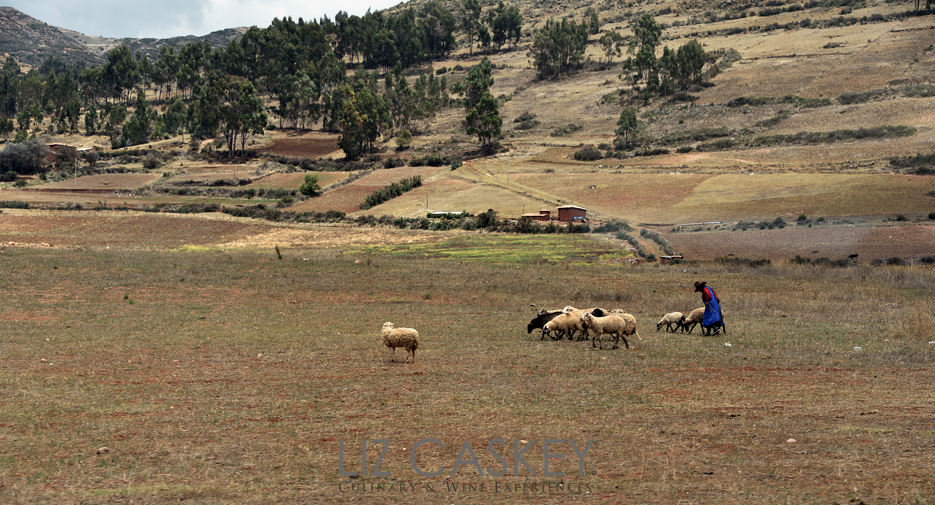

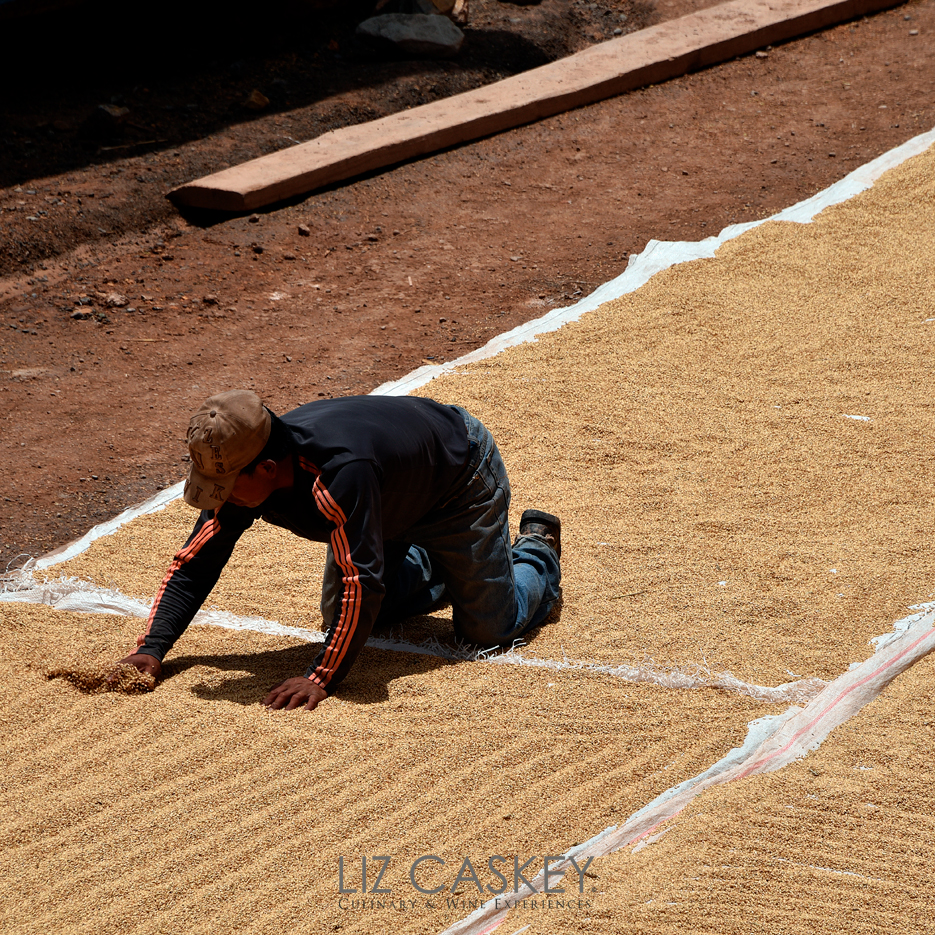
I glance across the patio towards the Mater Iniciativa research lab where a small team of researchers (botanists, anthropologists, biologists) gather. They work alongside Virgilio Martinez, his sister Malena Martinez (head of the center), and his wife and fellow chef, Pia Leon, to study and catalog indigenous Peruvian products. Each product’s scientific origin and use are fully documented. Later, after lunch, we would see tables of the different maize and tubers (among the thousands of varieties native to Peru). Outside, the golden hills of the Sacred Valley darken. Rain looks ominous as a gust of wind rustles the thatched roof in an impromptu cloud burst. I am grateful inside, sheltered from the elements.
Our next moment arrives and it’s called the “Diversity of Corn”. A firm, tangy fresh cheese is grilled over charcoal and served alongside a soupy bowl of sweet corn kernels called chullpi. This is the kind of delicious peasant food eaten in many local homes. An herbaceous green sauce freshens up the dish and the crunchy corn chips to sop up the sauce are insanely delicious.
The courses continue. I don’t intend to spoil the surprise of the full menu for you, but I can suggest that you pace yourself. Nibble, eat the moments you love, pass on the ones you don’t, drink lots of water. Remember…altitude! I start to slow down after Moment #4. By #8, my appetite has waned to the point I almost resist dessert. Almost. Thank god I did not!! “Huatia of Cacao” pays homage to cacao, which happens to grow in the jungle part of the Cusco province on the other side of the Andes. This delicious frozen play on cacao incorporates its mucilage, the sweet white lychee-like pulp encasing each of the seeds, as a refreshing granita. To end a meal there, I order an espresso made from Three Monkeys beans, which has gained a bit of a cult following in Cusco. So balance and fruity.
After lunch, we visit the research center. As we enter, our noses are met by the heavenly scent of fresh chocolate being made. PSA! MIL makes its own dark chocolate bars which you can take home with you (no brainer). We chat with a few of the international fellows who have arrived from all over the globe for residencies ranging from a month to a year. Corn, tubers, and herbs are laid out on tables to be cataloged. On the walls, there are illustrations of different Peruvian cacao pods and their flavor profiles. In a lone corner, some of the modern stone tableware designed exclusively for the restaurant along with gourmet products are available to take home.
I peer out the window. In the distance, I see a young boy herding his sheep. I wonder if he knows about this place. Would he wonder why guests come from all over the world to eat here? Would he feel proud to know that these local ingredients and flavors, perhaps many being so familiar, are being cataloged, studied, transformed, elevated, and constitute part of a beauitful contribution to the food culture of the Sacred Valley, Peru, and humanity?
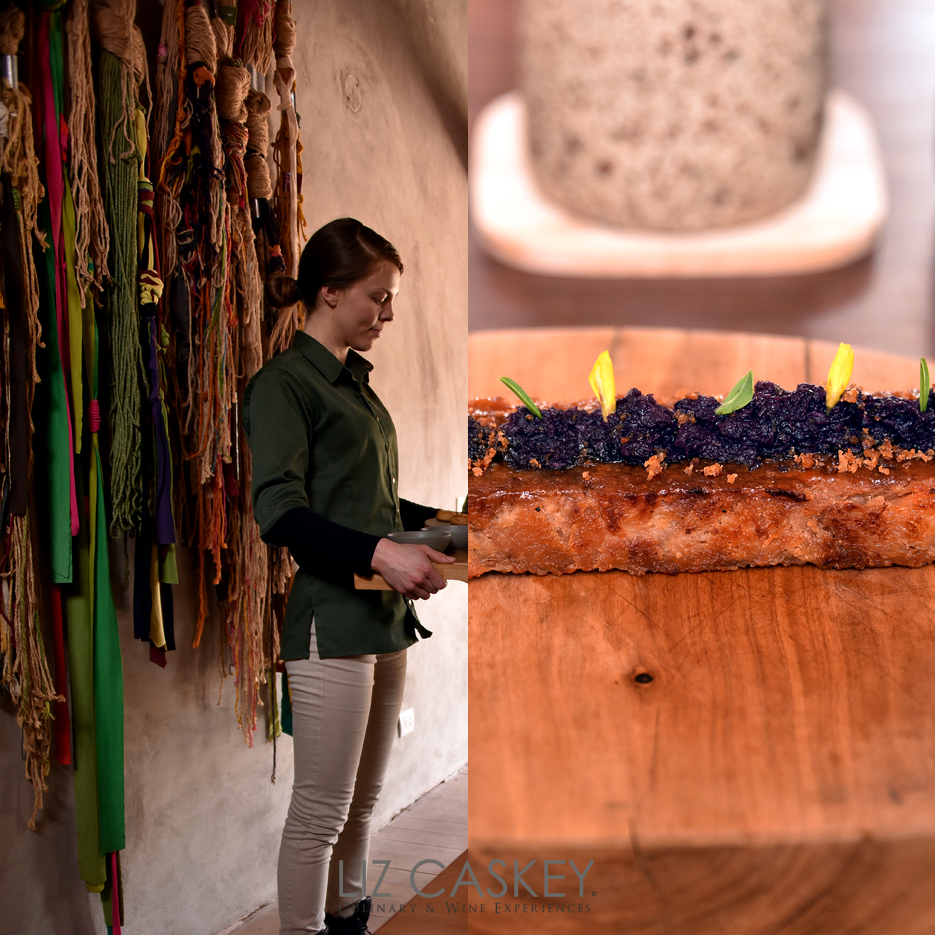
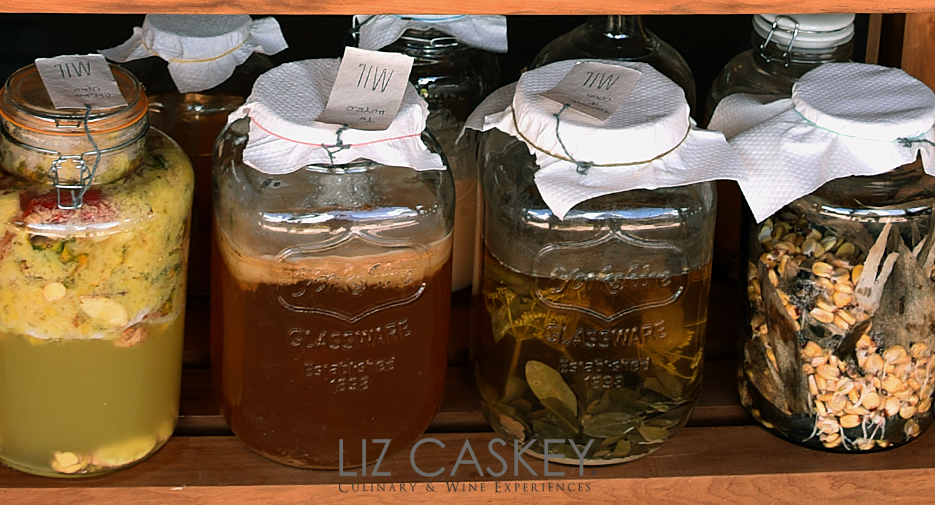
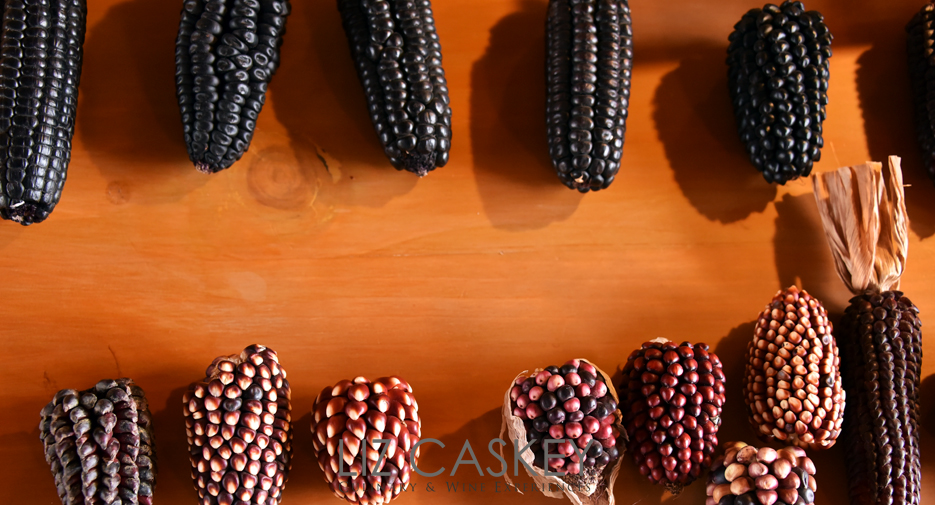
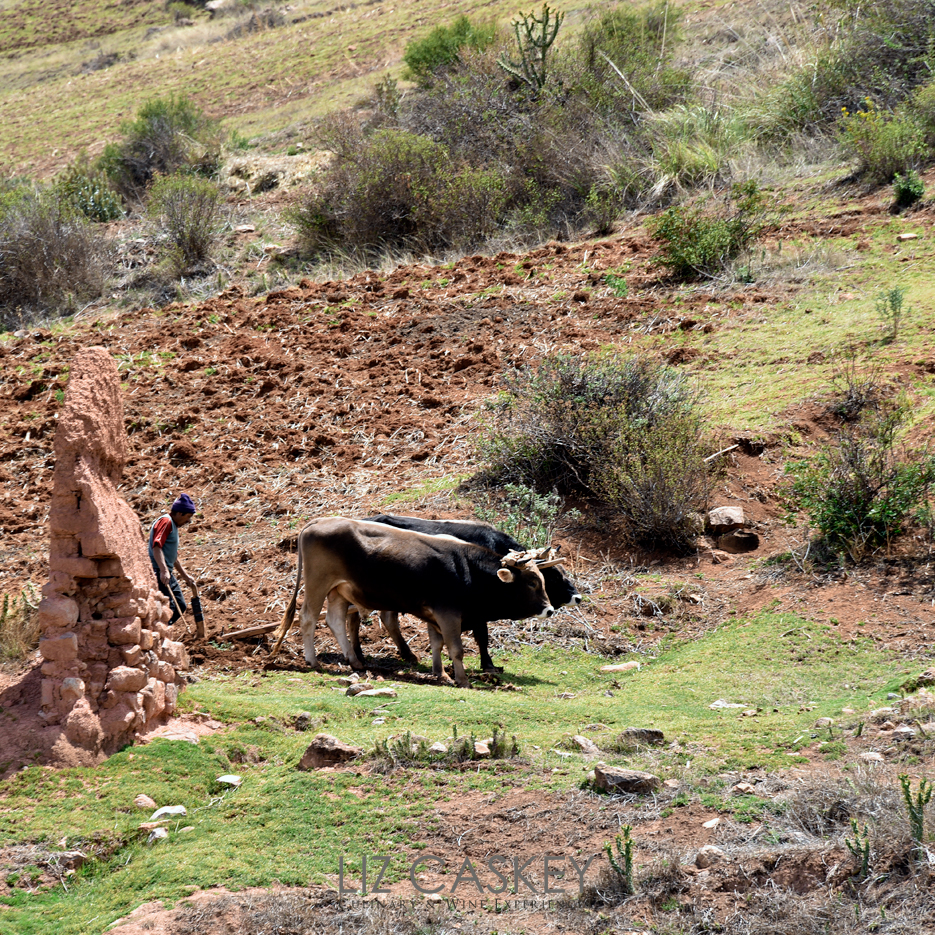
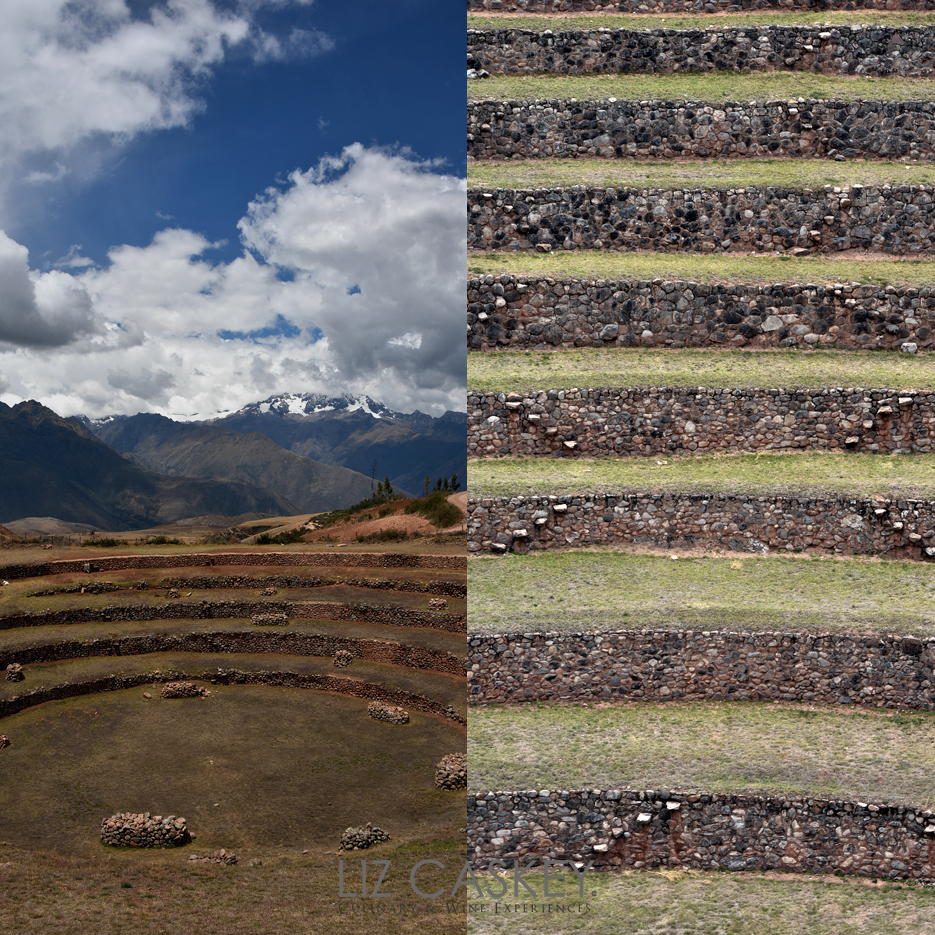

This is why MIL and its initiative are game-changers for the Sacred Valley and Peru.
They are putting the indigenous communities’ foods, cultures, heritage, and nature at the forefront of their mission. They are taking what’s endemic and traditional in the Sacred Valley and flipping it upside down to give it a modern edge. It’s not only a meal, but it’s also cultural immersion that is absolutely compelling–and delicious.
MIL merits a trip not just as a restaurant but as a “bucket list destination” within Peru. Can it stand proudly next to Machu Pichu? Absolutely.
